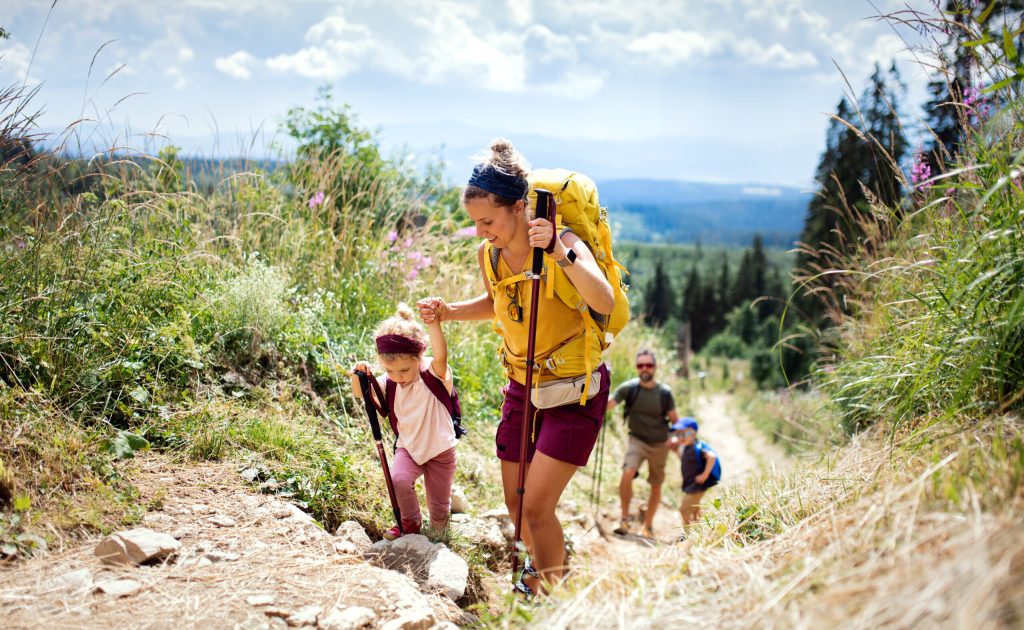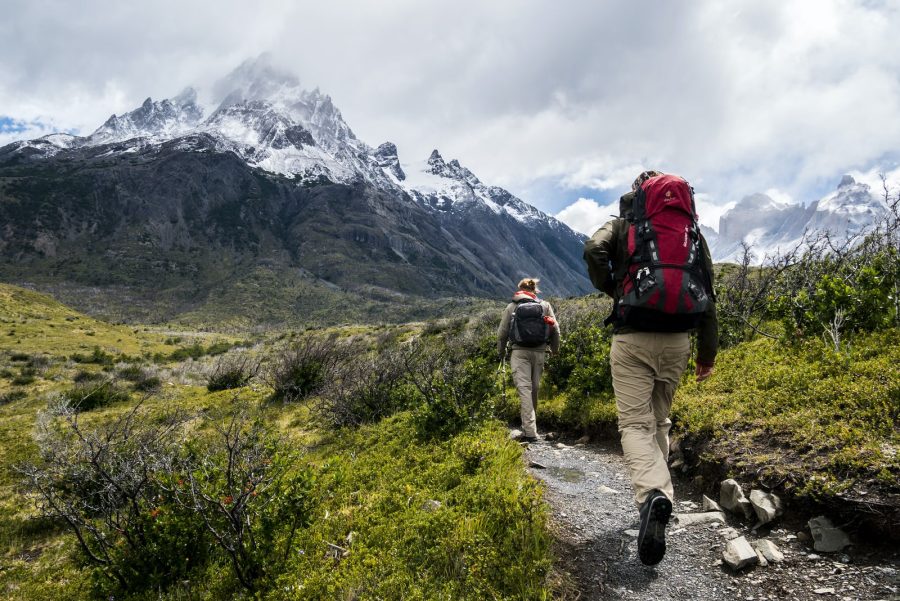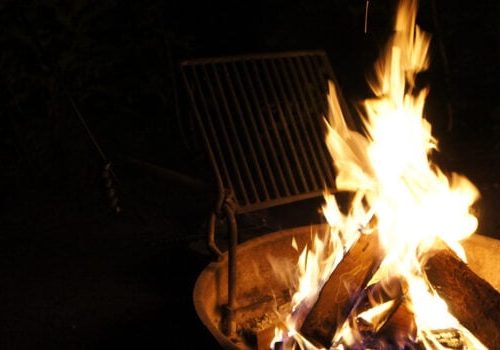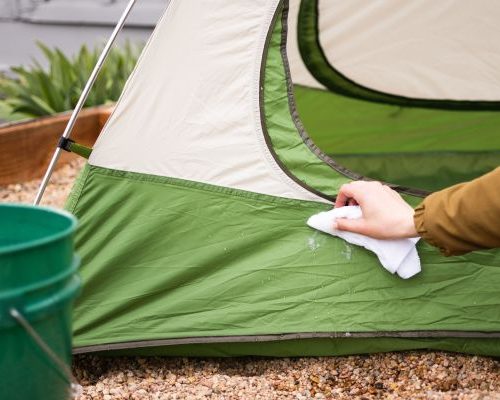Hiking is a fantastic way to connect with nature, stay active, and explore new terrain. However, it’s important to prioritize safety to ensure a positive and enjoyable experience. By following these safety tips for hiking, you can enhance your hiking experience while minimizing risks and ensuring your well-being in the great outdoors. Always prioritize safety and preparation before embarking on any hiking adventure. Sure, here are some detailed safety tips for hiking to ensure a safe and enjoyable outdoor experience.
Safety Tips For Hiking
- Plan Your Route: Research the trail you plan to hike, including its difficulty level, terrain, and length. Choose a trail that matches your fitness level and experience. Obtain maps and familiarize yourself with the route.
- Check the Weather: Before heading out, check the weather forecast for the area where you’ll be hiking. Avoid hiking in severe weather conditions like thunderstorms, heavy rain, or extreme heat.
- Tell Someone Your Plans: Inform a friend or family member about your hiking plans, including your route, expected return time, and emergency contact information. This is crucial in case something goes wrong and you need assistance.
- Pack Essential Gear: Carry the necessary gear such as a map, compass or GPS device, first aid kit, whistle, multi-tool, extra clothing layers, flashlight or headlamp with extra batteries, and enough food and water for the duration of your hike.
- Wear Appropriate Clothing: Dress in layers suitable for the weather conditions. Choose moisture-wicking and quick-drying clothing. Wear sturdy hiking boots or shoes that are broken in and provide good ankle support.
- Stay Hydrated and Nourished: Drink water regularly to stay hydrated, even if you don’t feel thirsty. Pack high-energy snacks like nuts, energy bars, and fruits to maintain your energy levels during the hike.
- Stay on Marked Trails: Stick to marked trails and avoid taking shortcuts or wandering off the trail. This minimizes the risk of getting lost or encountering dangerous terrain.
- Be Aware of Wildlife: Research the wildlife in the area and know how to respond if you encounter animals. Keep a safe distance and never feed wildlife.
- Practice Leave No Trace Principles: Respect nature and minimize your impact by following Leave No Trace principles. Pack out all trash, avoid damaging vegetation, and stay on durable surfaces.
- Monitor Your Energy Levels: Pace yourself and take breaks as needed. Avoid overexertion, especially in hot weather. If you start feeling tired or unwell, consider turning back.
- Be Prepared for Emergencies: Carry a fully charged cell phone (though signal may be limited in remote areas), a whistle for signaling for help, and know basic first aid techniques. If you encounter an emergency, stay calm and assess the situation before taking action.
- Respect the Environment: Respect local regulations and guidelines, including fire regulations and camping restrictions. Leave natural and cultural resources undisturbed for others to enjoy.
Safety Tips For Hiking with Kids

Hiking with kids can be a wonderful way to introduce them to nature, foster a love for the outdoors, and create lasting memories as a family. However, ensuring their safety is paramount to having a successful and enjoyable hiking experience. Here’s a comprehensive guide with safety tips specifically tailored for hiking with kids.
Preparing for the Hike
- Choose Kid-Friendly Trails: Select trails that are suitable for children’s age and hiking experience. Shorter, less challenging trails with interesting features like waterfalls, lakes, or wildlife are ideal for keeping them engaged and motivated.
- Plan Ahead: Research the trail thoroughly, including its length, difficulty level, elevation gain, and any specific features or hazards. Use maps and trail guides to familiarize yourself with the route.
- Inform Others: Let someone know your hiking plans, including the trail you’ll be on, estimated duration, and expected return time. This is crucial in case of emergencies.
- Pack Appropriately: Prepare a well-stocked hiking backpack that includes essentials for both adults and children. Here are some items to consider:
- Clothing: Dress children in layers suitable for the weather. Pack extra clothing in case they get wet or cold.
- Footwear: Ensure kids wear comfortable, sturdy shoes or hiking boots with good traction.
Sun Protection: Pack hats, sunglasses, sunscreen, and clothing that offers UV protection. - Food and Water: Carry plenty of snacks and water. Pack easy-to-eat, high-energy snacks like fruits, nuts, granola bars, and sandwiches.
- First Aid Kit: Include bandages, antiseptic wipes, tweezers, insect repellent, and any medications your child may need.
- Navigation and Communication: Bring a map, compass or GPS device (if needed), and a fully charged cell phone for emergencies. Consider a whistle for signaling.
- Educate Kids: Before starting the hike, explain basic hiking rules and safety guidelines to children. Teach them about trail etiquette, staying together as a group, and what to do if they get separated.
On the Trail
- Start Slowly: Begin the hike at a leisurely pace to allow children to adjust to the trail and surroundings. Take breaks as needed to rest, hydrate, and enjoy the scenery.
- Stay Together: Always hike as a group and keep children within sight and earshot. Establish clear guidelines about staying on the trail and not wandering off.
- Monitor Energy Levels: Pay attention to children’s energy levels and signs of fatigue or discomfort. Encourage breaks to rest, hydrate, and recharge.
- Encourage Exploration: Allow children to explore nature safely. Point out interesting plants, rocks, animals, or landmarks along the trail to keep them engaged and curious.
- Be Mindful of Wildlife: Teach children to observe wildlife from a safe distance and never approach or feed wild animals. Respect their habitats and behaviors.
- Watch for Hazards: Be aware of potential hazards such as steep drop-offs, slippery rocks, roots, or unstable terrain. Hold hands or guide younger children in tricky sections.
- Follow Leave No Trace Principles: Teach children to respect nature by packing out trash, staying on marked trails, and leaving natural and cultural resources undisturbed.
- Weather Awareness: Keep an eye on changing weather conditions. Be prepared with rain gear or extra layers if needed. Avoid hiking during extreme weather events.
Safety Tips for Specific Situations
- Water Safety: If hiking near water bodies, supervise children closely to prevent accidental slips or falls. Teach them about water safety and the dangers of fast-moving currents.
- Navigation: Involve children in navigation by showing them how to read a map or use a compass. Explain trail markers or signs to help them understand the route.
- Emergency Preparedness: Review what to do in case of emergencies, such as getting lost or separated. Teach children how to use a whistle or signal for help if needed.
- Bug Safety: Protect children from insect bites by applying insect repellent and dressing them in long sleeves and pants. Check for ticks during and after the hike.
- Sun Protection: Reapply sunscreen regularly and encourage children to wear hats and sunglasses to protect against UV rays, especially at higher elevations.
Engaging Children in the Hike

- Games and Activities: Keep children entertained with games related to nature, such as scavenger hunts (finding specific plants or animals), identifying bird calls, or collecting leaves or rocks.
- Nature Journaling: Encourage children to observe and record their experiences in a nature journal. They can draw pictures, write about what they see, or press flowers as souvenirs.
- Photography: Let children capture their hiking adventures with a camera or smartphone. Encourage them to take photos of interesting plants, wildlife, or scenic views.
- Storytelling: Share stories about the area’s history, wildlife, or natural features to spark children’s curiosity and imagination during breaks or rests.
After the Hike
- Check for Ticks: Perform a thorough tick check on children, paying attention to their hairline, armpits, and behind the ears. Remove any ticks promptly and monitor for signs of Lyme disease.
- Reflect and Recap: Discuss the hike with children, asking about their favorite parts, what they learned, and any memorable moments. Encourage them to share their experiences.
- Hydration and Nutrition: Ensure children drink plenty of water and eat a nutritious meal or snack after the hike to replenish energy and nutrients.
- Rest and Recovery: Allow children time to rest and recover after the hike, especially if it was physically challenging. Plan quiet activities for the remainder of the day.
In Conclusion
Hiking with kids is a rewarding experience that can foster their appreciation for nature, physical activity, and family bonding. By following these safety tips and preparing adequately, you can ensure a safe and enjoyable outdoor adventure for everyone involved. Remember to tailor your preparations and guidance to the age and capabilities of your children, making safety a priority while creating lasting memories in the great outdoors. These safety tips for hiking should be kept in mind before you hike next time. Therefore, there are many hiking blogs on our website which you might check for more information.



